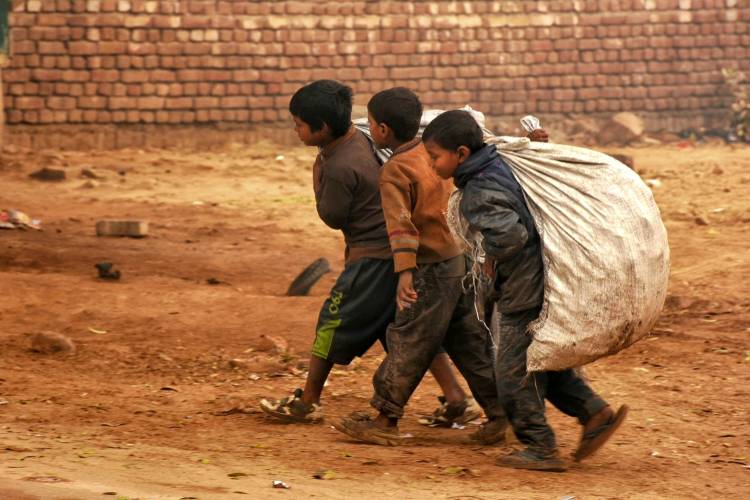Despite a global technology boom, governments worldwide have struggled to meet one of the most basic needs: food. According to the Global Report on Food Crises released last week, at least 282 million people in 59 countries experienced acute hunger in 2023. Gaza reported the most severe conditions, with the largest number of people facing famine. Unfortunately, the situation is unlikely to improve soon, with ongoing wars and a sharp decline in food security, particularly in the Gaza Strip and Sudan, pushing more people towards hunger.
About 705,000 people across five countries are experiencing Phase 5 hunger — the most severe level according to the UN’s Food and Agriculture Organisation. Maximo Torero, the chief economist of FAO, noted that this is the highest level of malnourishment recorded by international experts since the report began in 2016, marking a fourfold increase from that year. Notably, around 80% of those facing imminent famine are in Gaza, with South Sudan, Burkina Faso, Somalia, and Mali also reporting catastrophic hunger levels.
READ | India witnessing feminisation of agriculture as tech empowers women farmers
The report forecasts that those in Phase 5 will rise to approximately 1.1 million in Gaza and 79,000 in South Sudan by July. Food insecurity is also set to increase in Haiti, where gangs control significant portions of the capital. UN Secretary-General Antonio Guterres has condemned the current crisis as a human failing.
The struggle against starvation and malnutrition is worsening. During the pandemic in 2020, about 811 million people suffered from hunger, exacerbated by COVID-19, which severely impacted global efforts to reduce malnourishment. Ongoing conflicts, such as those between Russia-Ukraine and Israel-Palestine, have disrupted food grain supplies, exacerbating the crisis in poorer nations. For example, Libya imported 88% of its cereals from Russia and Ukraine.
Hunger: Climate change intensifies crisis
In addition to conflicts and economic instabilities, climate change plays a critical role in exacerbating global starvation. Erratic weather patterns, droughts, and floods have devastated crops and diminished agricultural productivity, especially in already vulnerable regions. The direct impact of changing climates affects planting seasons, water availability, and increases pestilence, which disrupts food supply chains. It is imperative that efforts towards sustainable agricultural practices and better resource management are accelerated to ensure that food systems can withstand and adapt to climate variability.
At a time when global governments display unity and geopolitical cooperation, notably in forums like BRICS and G20, it is puzzling that these efforts have not translated into substantial progress. Historical evidence from regions like Latin America and the Caribbean, where malnourishment significantly dropped from 1990-92 to 2012-14 due to efforts by organisations such as the Community of Latin American and Caribbean States, shows that tackling hunger effectively requires a localised, step-by-step approach.
The potential of technological innovation in combating malnourishment is immense. Advances in biotechnology, improved seed varieties, and precision agriculture are pivotal in increasing crop yields and reducing dependency on harsh chemicals. Furthermore, technology can streamline agricultural processes and improve supply chain efficiencies, ensuring that food reaches those in desperate need more effectively. By embracing technological solutions, the gap between food surplus and scarcity can be significantly narrowed, providing a robust response to the global hunger crisis.
Despite being one of the largest producers of key agricultural commodities like rice, wheat, milk, and sugarcane, India also faces severe malnourishment challenges. Ranked 111th out of 125 countries in the Global Hunger Index, the report describes the hunger level in India as serious. Alarmingly, with a population of 1.4 billion, India houses a quarter of the world’s undernourished population, totalling over 190 million hungry people.
The battle for food security is ongoing, with new challenges emerging that threaten progress. It is crucial to rekindle discussions on food as a basic human right and address ideological restrictions that limit access to a balanced diet. Recognising hunger as a primary concern is essential for effective solutions.
According to Guterres, sufficient funding could alleviate the problem to some extent, though current funding falls short of the needs. Developed countries must shoulder the responsibility of addressing global hunger. In 2022, the United States led efforts to ensure that 160 million of the world’s neediest had enough food. As the largest donor to the UN World Food Program, the US plays a significant role but must also acknowledge its part in perpetuating conflicts that lead to hunger crises, such as the ongoing situation in Gaza. Malnourishment and famine are not mere accidents but are often the result of man-made crises that must be prevented.
A significant aspect often overlooked in discussions about food security is the issue of food waste. Globally, approximately one-third of all food produced for human consumption is wasted. This waste represents not just a loss of food but also of resources such as water, land, energy, labour, and capital. Nations need to implement effective policies that tackle food waste at all levels—from production to consumption—ensuring that resources are utilised optimally. By addressing these inefficiencies, more food can be made available to those in need, making a considerable impact on global hunger.

